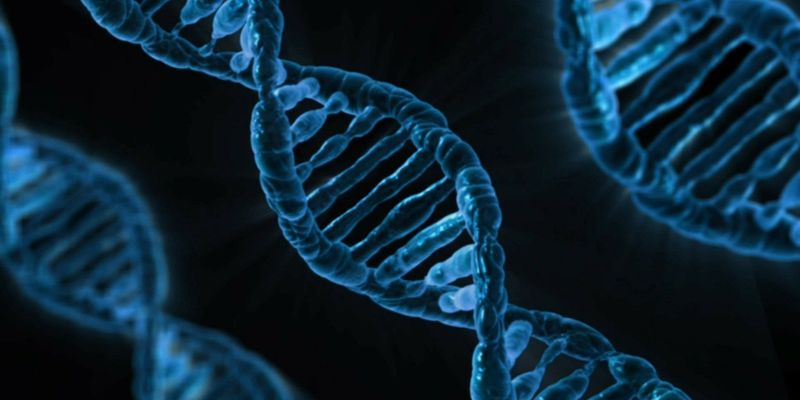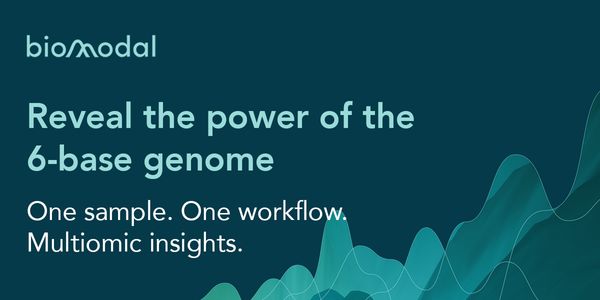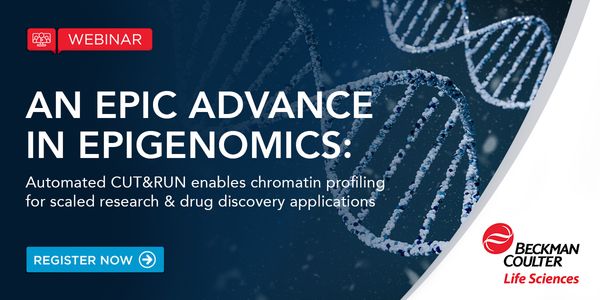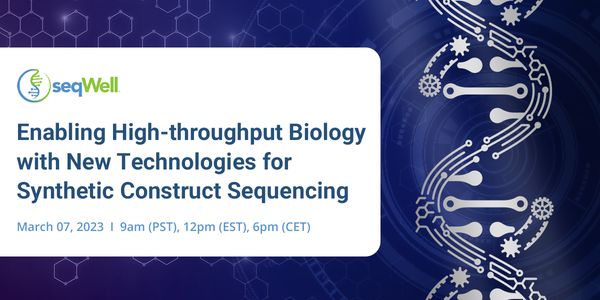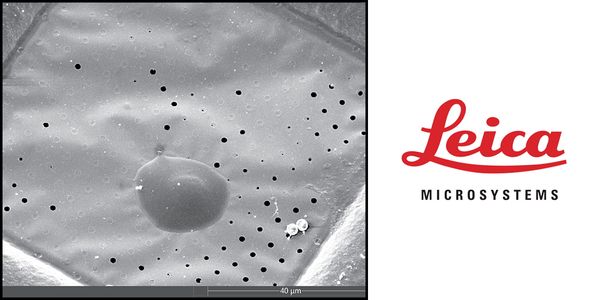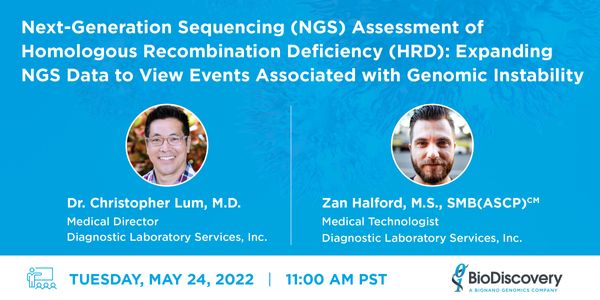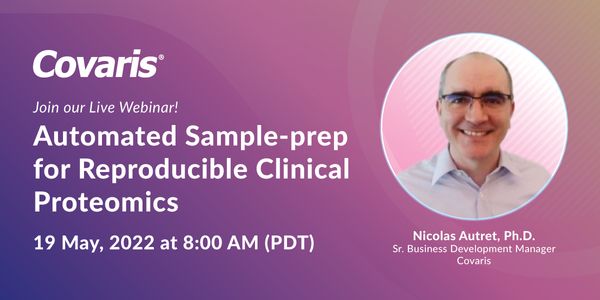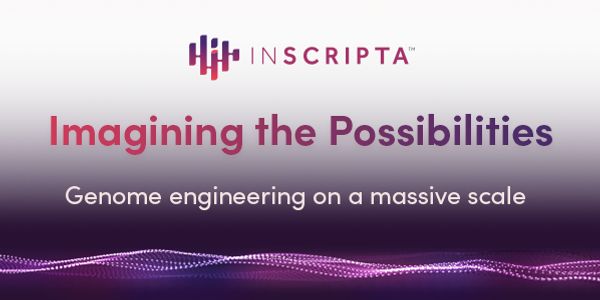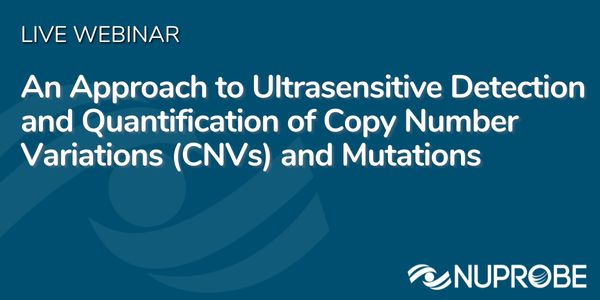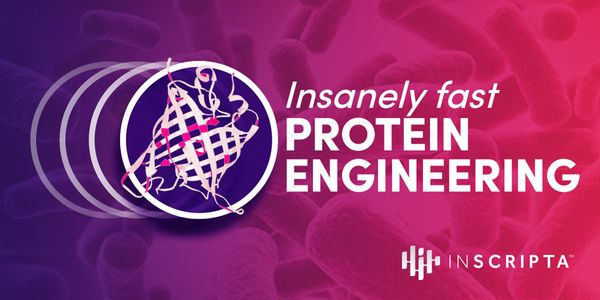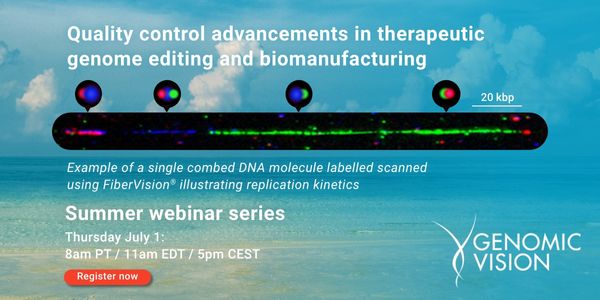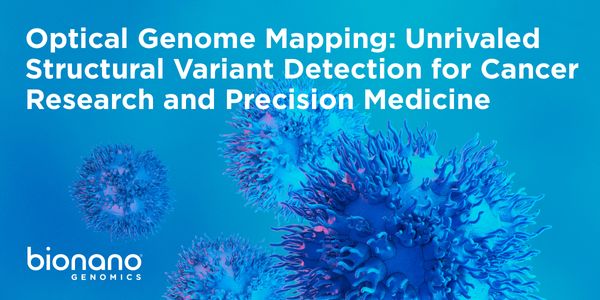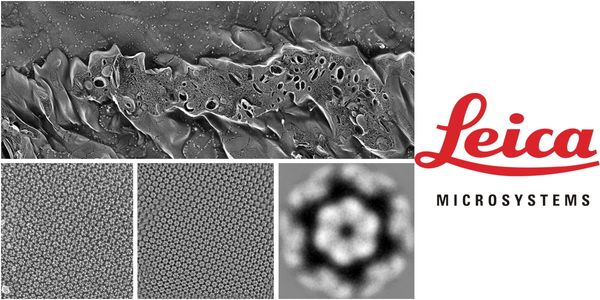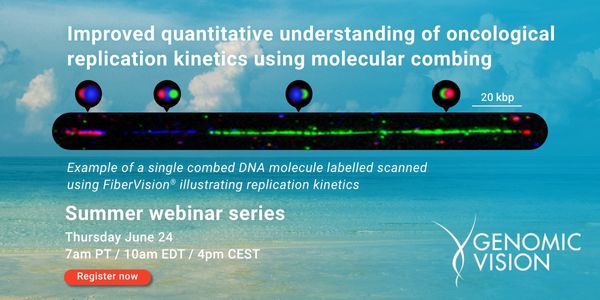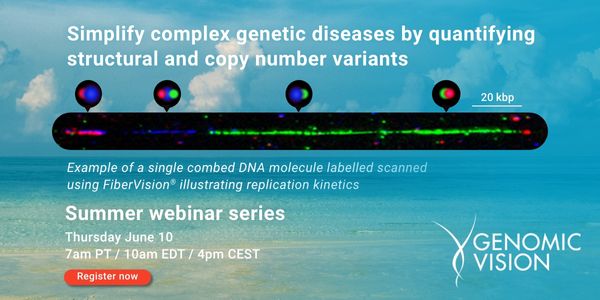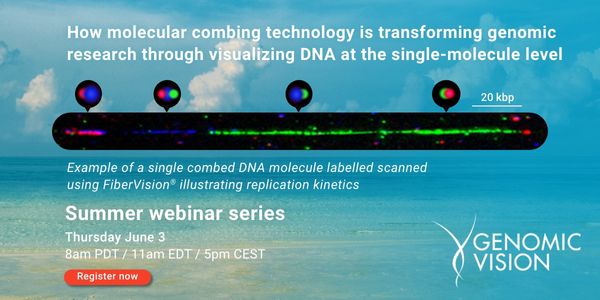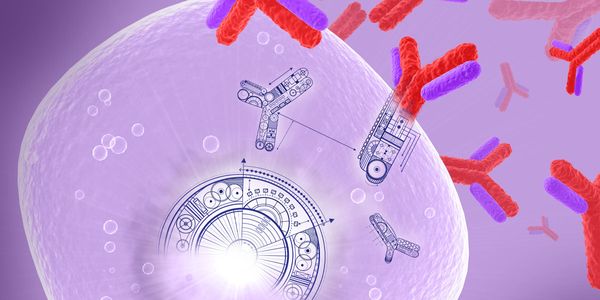Dna structure
Deoxyribonucleic acid (DNA) is made up of two strands winding around each other to generate a "double helix". The backbone of each individual strand consists of sugar and phosphate groups. Each sugar is attached to a base: adenine (A), cytosine (C), guanine (G), or thymine (T).
-
MAR 27, 2024 | 9:00 AMJoin Dr. Emily Hodges, assistant professor of biochemistry at Vanderbilt University, to learn more about how the Hodges Lab is utilizing the 6-base genome to investigate the dynamics of enha...JAN 23, 2024 | 11:00 AMThe study of 3D organoids has transformed biomedical research, offering a more accurate representation of in vivo conditions. Maximizing the potential of 3D organoid research requires advanc...Speaker: Andris AbramenkovsOCT 24, 2023 | 10:00 AMDynamic changes in chromatin drive gene expression programs during cellular development and contribute to pathological changes underlying disease. To date, efforts to characterize chromatin...JUL 26, 2023 | 4:05 PMC.E. CREDITSEmploying a metagenomic search, we identified a family of miniature CRISPR-Cas type V-L systems capable of RNA-guided dsDNA target cleavage without a tracrRNA. A bacterial depletion screen r...MAR 07, 2023 | 9:00 AMDate: March 07, 2023 Time: 9:00am (PST), 12:00pm (EST), 6:00pm (CET) The ability to synthesize and sequence vast numbers of DNA constructs is a cornerstone of modern high-throughput biologic...FEB 15, 2023 | 7:00 AMDate: February 15, 2023 Time: 7:00am (PST), 10:00pm (EST), 4:00pm (CET) While not all microscopy samples can fluoresce, all can scatter light, and this scattered light can be imaged. This ha...Speaker: Philipp Kukura , Francesco Reina , Matthew Kose-Dunn , Phil AllenSponsored By: Teledyne PhotometricsNOV 17, 2022 | 11:00 AMDate: November 17, 2022 Time: 11:00am (PST), 2:00pm (EST), 8:00pm (CEST) High pressure freezing offers versatile and deep capability in the study of intricate changes in fine structure or ce...NOV 17, 2022 | 8:00 AMDate: November 17, 2022 Time: 8:00am PST, 11:00am EST Genome editing is—or will soon be—in the clinic for several diseases and more applications are currently under development....Speaker: Natalia de Val , Zuben Brown , Veer BhattPresented at: Thermo Fisher Scientific - Electron Microscopy Webinars
Sponsored By: Thermo Fisher ScientificMAY 24, 2022 | 11:00 AMDate: May 24, 2022 Time: 11:00am (PDT), 2:00pm (EDT), 7:00pm (CEST) NGS tumor profiling has become the mainstay of modern cancer therapy. Several NCCN-guided and FDA-approved therapies are c...Speaker: Dr. Christopher Lum, M.D. , Zan Halford, M.S. SMB(ASCP)CM,Sponsored By: BioDiscovery, A Bionano Genomics CompanyMAY 19, 2022 | 8:00 AMDate: May 19, 2022 Time: 8:00am (PDT), 11:00pm (EDT), 5:00pm (CEST) Mass spectrometry (MS)-based proteomic technologies are increasingly applied in a clinical context for disease classific...MAR 09, 2022 | 8:00 AMDate: March 09, 2021 Time: 08:00am (PST), 11:00am (EST), 5:00pm (CEST) Bioengineering technologies hold enormous potential to solve many of our world’s pressing problems. However, they...FEB 09, 2022 | 9:00 AMDate: February 09, 2021 Time: 09:00am (PST), 12:00pm (EST) In this webinar we introduce quantitative amplicon sequencing (QASeq): a highly-sensitive and robust NGS-based method for the detec...OCT 14, 2021 | 7:00 AMDate: October 14, 2021 Time: 7:00am (PDT), 10:00am (EDT) Heterologous protein expression in model organisms has many applications, including protein engineering, production of industrial enz...SEP 22, 2021 | 11:00 PMNeutrophils are the most abundant immune cells in human blood and are crucial for host defense against bacterial and fungal infections. Neutrophils are made mainly in the bone marrow from wh...JUL 01, 2021 | 8:00 AMDate: July 1, 2021 Time: 8:00am (PDT), 11:00am (EDT), 5:00pm (CEST) What’s driving precision-medicine innovations? New advances in gene and cell therapy manufacturing, along with more...JUN 30, 2021 | 7:00 AMDate: June 30, 2021 Time: 7:00am (PDT), 8:00am (EDT) Join us to discover how Optical genome mapping (OGM) mapping can help you in the characterization of complex samples. OGM is a non-sequen...JUN 29, 2021 | 11:00 AMDate: June 29, 2021 Time: 11:00am (PDT), 02:00pm (EDT) Freeze-fracture and freeze-etching are useful tools for studying flexible membrane-associated structures such as tight junctions or the...JUN 24, 2021 | 7:00 AMDate: June 24, 2021 Time: 7:00am (PDT), 10:00am (EDT), 4:00pm (CEST) Problem: A comprehensive mechanistic understanding of how genetic alterations impact cancer development and therapeutic i...JUN 10, 2021 | 8:55 AMMass spectrometry-based proteomics methods are finding increasing use in structural biology research. Beyond simple interaction networks, information about stable protein-protein, protein-li...JUN 10, 2021 | 7:00 AMDate: June 10, 2021 Time: 7:00am (PDT), 10:00am (EDT), 4:00pm (CEST) Discover how to categorize small-to-large genetic modifications using molecular combing. Our Proprietary Genome Morse Cod...JUN 03, 2021 | 8:00 AMDate: June 3, 2021 Time: 8:00am (PDT), 11:00am (EDT), 5:00pm (CEST) Molecular combing provides unbiased quantification and characterization of DNA structure and dynamics by imaging single DN...MAY 25, 2021 | 8:00 AMDate: May 25, 2021 Time: 8:00am (PDT) Reliable expression of recombinant proteins in human, CHO, or insect cells is essential for many aspects of biomedical research and drug development, bu...MAY 11, 2021 | 10:00 AMDate: May 11, 2021 Time: 10:00zm PDT Your samples are some of the most valuable assets in the laboratory. After spending countless hours on extraction and preparation, your conclusions could...Speaker: Paulina Kocjan , Kate Meola , Zareh ZurabyanMAY 05, 2021 | 12:00 AMShort tandem repeats (STRs) are gold-standard genetic loci used for source attribution of evidentiary material in legal matters. Their power lies in their high heterozygosity and large allel...
MAR 27, 2024 | 9:00 AM
Join Dr. Emily Hodges, assistant professor of biochemistry at Vanderbilt University, to learn more about how the Hodges Lab is utilizing the 6-base genome to investigate the dynamics of enha...
JAN 23, 2024 | 11:00 AM
The study of 3D organoids has transformed biomedical research, offering a more accurate representation of in vivo conditions. Maximizing the potential of 3D organoid research requires advanc...
Speaker:
Andris Abramenkovs
OCT 24, 2023 | 10:00 AM
Dynamic changes in chromatin drive gene expression programs during cellular development and contribute to pathological changes underlying disease. To date, efforts to characterize chromatin...
JUL 26, 2023 | 4:05 PM
C.E. CREDITS
Employing a metagenomic search, we identified a family of miniature CRISPR-Cas type V-L systems capable of RNA-guided dsDNA target cleavage without a tracrRNA. A bacterial depletion screen r...
MAR 07, 2023 | 9:00 AM
Date: March 07, 2023 Time: 9:00am (PST), 12:00pm (EST), 6:00pm (CET) The ability to synthesize and sequence vast numbers of DNA constructs is a cornerstone of modern high-throughput biologic...
FEB 15, 2023 | 7:00 AM
Date: February 15, 2023 Time: 7:00am (PST), 10:00pm (EST), 4:00pm (CET) While not all microscopy samples can fluoresce, all can scatter light, and this scattered light can be imaged. This ha...
Speaker:
Philipp Kukura
, Francesco Reina
, Matthew Kose-Dunn
, Phil Allen
Sponsored By: Teledyne Photometrics
NOV 17, 2022 | 11:00 AM
Date: November 17, 2022 Time: 11:00am (PST), 2:00pm (EST), 8:00pm (CEST) High pressure freezing offers versatile and deep capability in the study of intricate changes in fine structure or ce...
NOV 17, 2022 | 8:00 AM
Date: November 17, 2022 Time: 8:00am PST, 11:00am EST Genome editing is—or will soon be—in the clinic for several diseases and more applications are currently under development....
Speaker:
Natalia de Val
, Zuben Brown
, Veer Bhatt
Presented at: Thermo Fisher Scientific - Electron Microscopy Webinars
Sponsored By: Thermo Fisher Scientific
Sponsored By: Thermo Fisher Scientific
MAY 24, 2022 | 11:00 AM
Date: May 24, 2022 Time: 11:00am (PDT), 2:00pm (EDT), 7:00pm (CEST) NGS tumor profiling has become the mainstay of modern cancer therapy. Several NCCN-guided and FDA-approved therapies are c...
Speaker:
Dr. Christopher Lum, M.D.
, Zan Halford, M.S. SMB(ASCP)CM,
Sponsored By: BioDiscovery, A Bionano Genomics Company
MAY 19, 2022 | 8:00 AM
Date: May 19, 2022 Time: 8:00am (PDT), 11:00pm (EDT), 5:00pm (CEST) Mass spectrometry (MS)-based proteomic technologies are increasingly applied in a clinical context for disease classific...
MAR 09, 2022 | 8:00 AM
Date: March 09, 2021 Time: 08:00am (PST), 11:00am (EST), 5:00pm (CEST) Bioengineering technologies hold enormous potential to solve many of our world’s pressing problems. However, they...
FEB 09, 2022 | 9:00 AM
Date: February 09, 2021 Time: 09:00am (PST), 12:00pm (EST) In this webinar we introduce quantitative amplicon sequencing (QASeq): a highly-sensitive and robust NGS-based method for the detec...
OCT 14, 2021 | 7:00 AM
Date: October 14, 2021 Time: 7:00am (PDT), 10:00am (EDT) Heterologous protein expression in model organisms has many applications, including protein engineering, production of industrial enz...
SEP 22, 2021 | 11:00 PM
Neutrophils are the most abundant immune cells in human blood and are crucial for host defense against bacterial and fungal infections. Neutrophils are made mainly in the bone marrow from wh...
JUL 01, 2021 | 8:00 AM
Date: July 1, 2021 Time: 8:00am (PDT), 11:00am (EDT), 5:00pm (CEST) What’s driving precision-medicine innovations? New advances in gene and cell therapy manufacturing, along with more...
JUN 30, 2021 | 7:00 AM
Date: June 30, 2021 Time: 7:00am (PDT), 8:00am (EDT) Join us to discover how Optical genome mapping (OGM) mapping can help you in the characterization of complex samples. OGM is a non-sequen...
JUN 29, 2021 | 11:00 AM
Date: June 29, 2021 Time: 11:00am (PDT), 02:00pm (EDT) Freeze-fracture and freeze-etching are useful tools for studying flexible membrane-associated structures such as tight junctions or the...
JUN 24, 2021 | 7:00 AM
Date: June 24, 2021 Time: 7:00am (PDT), 10:00am (EDT), 4:00pm (CEST) Problem: A comprehensive mechanistic understanding of how genetic alterations impact cancer development and therapeutic i...
JUN 10, 2021 | 8:55 AM
Mass spectrometry-based proteomics methods are finding increasing use in structural biology research. Beyond simple interaction networks, information about stable protein-protein, protein-li...
JUN 10, 2021 | 7:00 AM
Date: June 10, 2021 Time: 7:00am (PDT), 10:00am (EDT), 4:00pm (CEST) Discover how to categorize small-to-large genetic modifications using molecular combing. Our Proprietary Genome Morse Cod...
JUN 03, 2021 | 8:00 AM
Date: June 3, 2021 Time: 8:00am (PDT), 11:00am (EDT), 5:00pm (CEST) Molecular combing provides unbiased quantification and characterization of DNA structure and dynamics by imaging single DN...
MAY 25, 2021 | 8:00 AM
Date: May 25, 2021 Time: 8:00am (PDT) Reliable expression of recombinant proteins in human, CHO, or insect cells is essential for many aspects of biomedical research and drug development, bu...
MAY 11, 2021 | 10:00 AM
Date: May 11, 2021 Time: 10:00zm PDT Your samples are some of the most valuable assets in the laboratory. After spending countless hours on extraction and preparation, your conclusions could...
Speaker:
Paulina Kocjan
, Kate Meola
, Zareh Zurabyan
MAY 05, 2021 | 12:00 AM
Short tandem repeats (STRs) are gold-standard genetic loci used for source attribution of evidentiary material in legal matters. Their power lies in their high heterozygosity and large allel...
